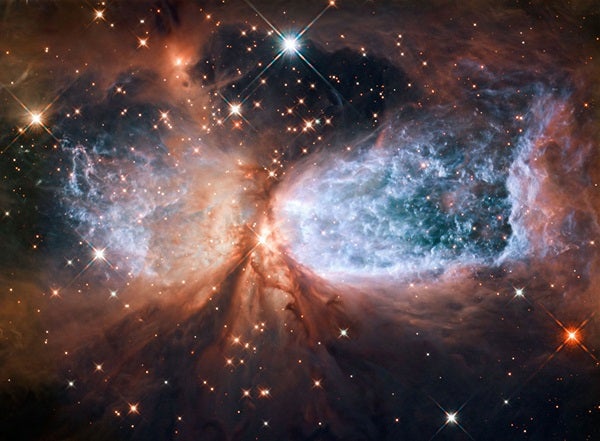Despite the celestial colors of this picture, there is nothing peaceful about star forming region Sharpless 2–106 (S106). A devilish young star named S106 IR lies in it and ejects material at high speed, which disrupts the gas and dust around it. The star has a mass about 15 times that of the Sun and is in the final stages of its formation. It will soon quiet down by entering the main sequence, the adult stage of stellar life.
For now, S106 IR remains embedded in its parent cloud, but it is rebelling against it. The material spewing off the star not only gives the cloud its hourglass shape, but also makes the hydrogen gas in it hot and turbulent. The resulting intricate patterns are clearly visible in this Hubble image.
The young star also heats up the surrounding gas, making it reach temperatures of 18,000° Fahrenheit (10,000° Celsius). The star’s radiation ionizes the hydrogen lobes, making them glow. The light from this glowing gas is colored blue in this image.
Separating these regions of glowing gas is a cooler, thick lane of dust, appearing red in the image. This dark material almost completely hides the ionizing star from view, but the young object can still be seen peeking through the widest part of the dust lane.
S106 was the 106th object to be cataloged by the astronomer Stewart Sharpless in the 1950s. It is a few thousand light-years distant in the direction of Cygnus the Swan. The cloud itself is relatively small by the standards of star-forming regions, around 2 light-years along its longest axis. This is about half the distance between the Sun and Proxima Centauri, our nearest stellar neighbor.










